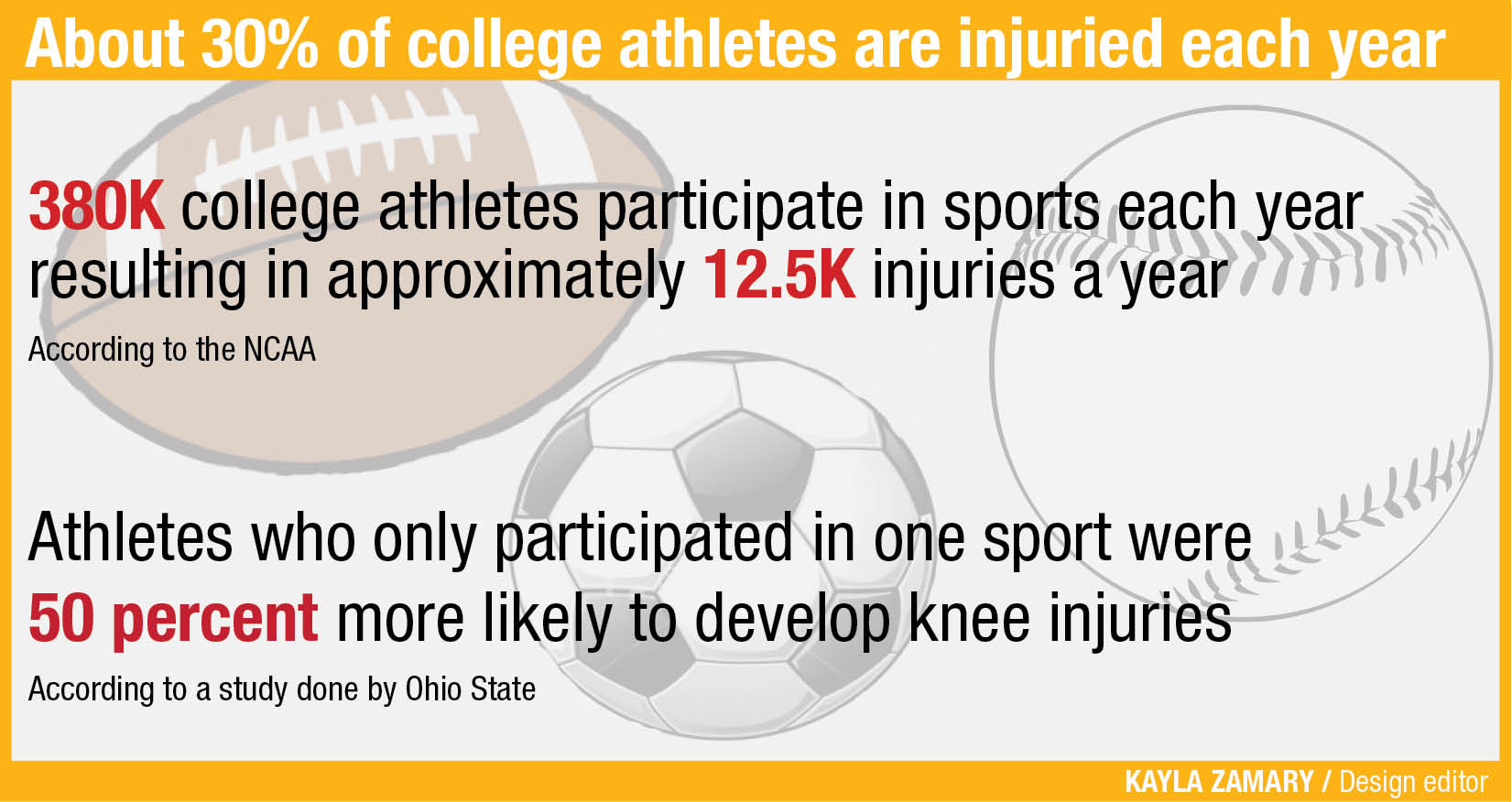
With any sport comes the risk of injury, but a recent study by Ohio State researchers showed preventative measures can be taken to avoid any costly health issues.
Tim Hewett, the director of OSU Sports Health and Performance Institute, recently looked at one-sport athletes specifically. The study followed 500 young athletes, ranging from sixth to 12th grade, over a 10-year period, Hewett said. According to the study, athletes who only participated in one sport were 50 percent more likely to develop knee injuries, and in one part of the study specifically looking at young girls, were in turn 33 percent more likely to suffer from long-term obesity.
Hewett suggested the key to avoiding these costly injuries is playing multiple sports, training in ways that work different body muscles and working on different techniques to avoid injury.
“We encourage kids to stay active and play multiple sports,” he said. “By planting the feet in cutting and working on better control, we can decrease risk by 50 percent.”
Dr. Chris Kaeding, the executive director for OSU Sports Medicine, said he doesn’t think students today will be able to participate in multiple sports, though.
“In order to compete and maximize performance, athletes tend to focus on one sport,” he said, because competition has gone up overall so children more often focus on one particular area.
Kaeding agreed, however, different training routines could be helpful in preventing injuries.
“There is more and more evidence that maintaining good core strength prevents initial and repeat injuries,” Kaeding said.
Using a variety of activities leads to better symmetry in sports, and some OSU athletes said they often train accordingly.
“We stay fit during the off-season using different muscles,” senior first baseman of the OSU softball team Evelyn Carillo said.
Each year, roughly 380,000 college athletes participate in sports which result in approximately 12,500 injuries a year, according to a LiveStrong.com article.
Student athletes at OSU don’t always have the ability to play multiple sports, but there are other ways to work out they could explore, Hewett said.
“Anything that teaches better body control, such as dance or gymnastics, could help,” he said.
His study researched various items, such as kinematics, virtual models, forces on the body, body mass index and skeletal and muscular systems to determine what parts of the body were being strained from continuous similar exercises, Hewett said.
The study was able to identify some of the causes of injuries because it worked on intervention by looking at the strain on different parts of the body at the muscular and skeletal levels.
Of the age groups Hewett looked at, about 7.2 million high school students played sports during the 2005-2006 academic year, according to a 2006 Center for Disease Control study, and there were about 2 million injuries, 500,000 doctor visits and 30,000 hospitalizations that year among high school athletes related to sports injuries.


